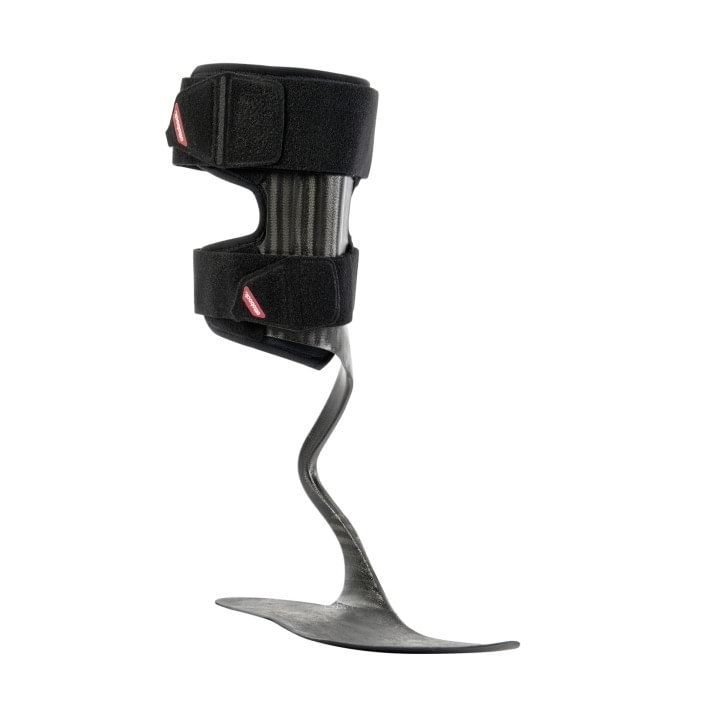Multiple sclerosis (MS)
The brain and spinal cord make up the central nervous system (CNS). It is responsible for coordinating all motor functions and internal organic processes, as well as the integration of all external and internal stimuli. It works according to the principle of a control centre that conducts electric impulses over nerve fibres. The nerve fibres are sheathed in an insulating layer.
This insulating layer is mainly composed of myelin, a white fatty substance. In people with multiple sclerosis, this is irreversibly damaged due to a defensive reaction of the immune system. This means that individual impulses are slowed down or cannot be transmitted at all anymore.
Around 200,000 people in Germany suffer from MS, which often does not occur until the age of 20 to 40. For reasons that remain to be explained, adult women account for the largest proportion of the 2,500 new cases in Germany each year.
Symptoms
MS can cause many different neurological symptoms. These include impaired vision (e.g. seeing double), impaired bladder function, spastic paralysis of the limbs, fatigue and disruptions of fine motor skills. These symptoms frequently occur in stages, which can be caused for example by physical or emotional stress or by infections, and which may vary in frequency and intensity.
MS is classified into various disorders:
- Relapsing-remitting MS predominates initially (approx. 85 to 90%): One or more neurological symptoms occur for a short time only, i.e. they are alleviated again (almost) entirely after just a few days.
- Around 30 to 40% of patients with an initially relapsing-remitting course of the disease develop increasingly severe impairments over a period of 10 to 15 years. In this case one speaks of a secondary chronic-progressive course of the disease.
- In 10 to 15% of the patients, the illness begins directly with the primary chronic-progressive form. With this course of the disease, the neurological symptoms which develop do not go away again. But this is relatively rare. Mixed forms of these basic versions of the disease occur as well.
Causes
The causes of MS have not been determined to date. However, it has been established that specific defence cells, which are normally used by the body's immune system to respond to invading pathogens, are incorrectly programmed with this illness. They combat the body's own structures instead of foreign ones (namely the myelin of the myelin sheath and myelin-based proteins).
Numerous theories on the origins of multiple sclerosis have been discussed and corresponding studies conducted on this basis. There appear to be links to a genetic predisposition and the role of the Epstein-Barr virus and the herpes virus HHV-6 has been examined intensively as well. At this point, it is reasonable to assume that the disease is caused by a whole host of factors.
Diagnosis
In order to determine whether a patient has developed MS, the attending neurologist has access to a broad range of diagnostic procedures. This however is preceded by thoroughly establishing the patient's individual history (anamnesis).
If the anamnesis confirms the suspicion of MS, clinical tests provide further information. They examine the patient's motor skills, coordination, reflexes, vision and strength in detail. This makes it possible to determine the extent to which neurological functions are damaged and what areas of the brain are affected. The conductivity of the nerve fibres can also be determined in electro-physiological tests (checking sensitivity in the limbs).
Magnetic resonance imaging (MRI) can be used to visualise the inflamed areas of the CNS. Lumbar puncture is another examination method; the patient's spinal canal is punctured between two lumbar vertebrae so that cerebrospinal fluid can be extracted.
Therapy
Therapy to treat the causes of multiple sclerosis does not exist at this time. In contrast to previous assumptions, moderate participation in sports is recommended with nearly all versions. When MS patients suffer from spasticity, regular physical therapy (physiotherapy) and/or the use of medical devices such as orthoses is recommended. The treatment may also be supplemented by the administration of medications.
Products

WalkOn Reaction
The WalkOn Reaction uses the ground reaction force to help lift the foot and raise the knee joint in case of minor paralysis of the lower limbs.

WalkOn Flex
The WalkOn flex helps lift the foot when the foot lifting musculature is paralysed, while permitting maximum freedom of movement.

WalkOn and WalkOn Trimable
The WalkOn/Trimable helps lift the foot when the foot lifting musculature is paralysed, and stabilises the ankle with slight support for a physiological gait pattern.

Genu Neurexa
The Genu Neurexa provides good support after a stroke. It stabilises the knee and prevents overextension of the knee joint. Bending the knee continues to be possible.

The new C-Brace®
The new C-Brace® ‒ taking you further. The C-Brace® is the world’s only orthotronic mobility system that uses sensor technology to control both the stance and swing phase. The user is supported in real time during every walking phase
The products shown are fitting examples. Whether a product is actually suitable for you and whether you are capable of exploiting the functionality of the product to its fullest depends on many different factors. Amongst others, your physical condition, fitness and a detailed medical examination are key. Your doctor or orthopaedic technician will also decide which fitting is most suited to you. We are happy to support you.






